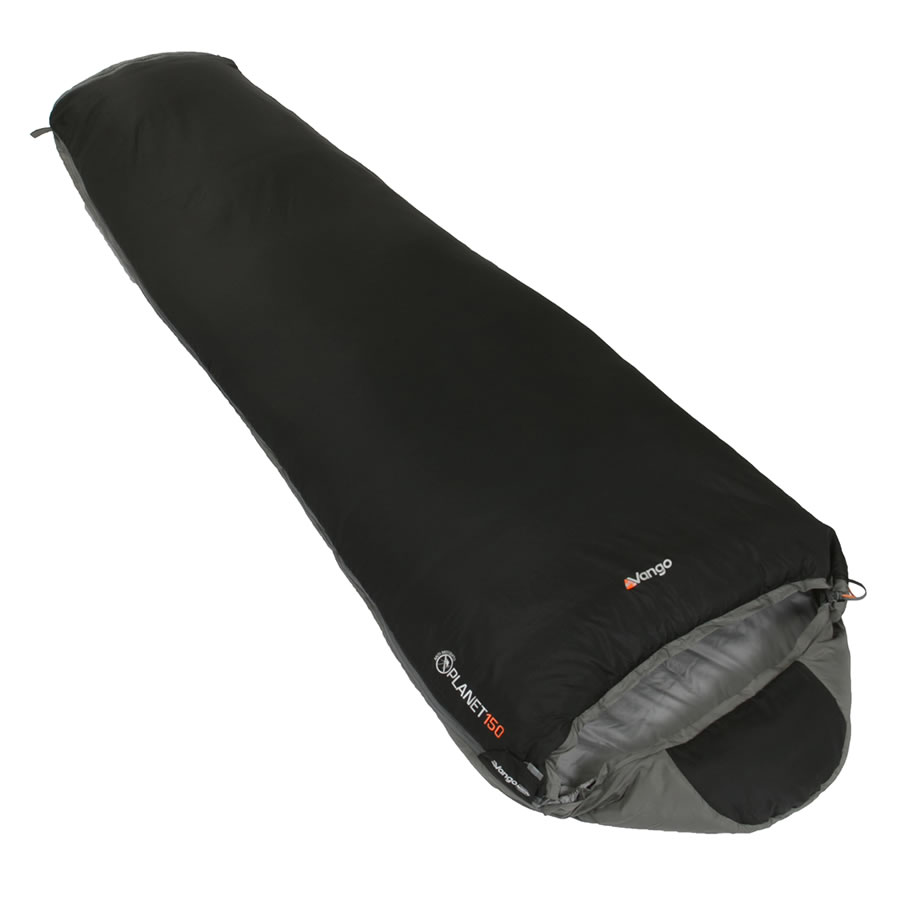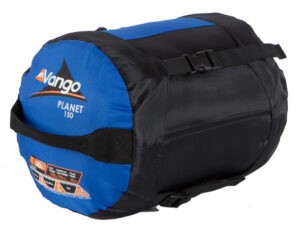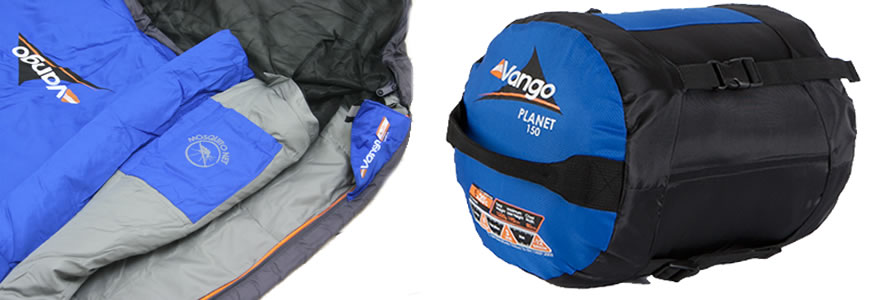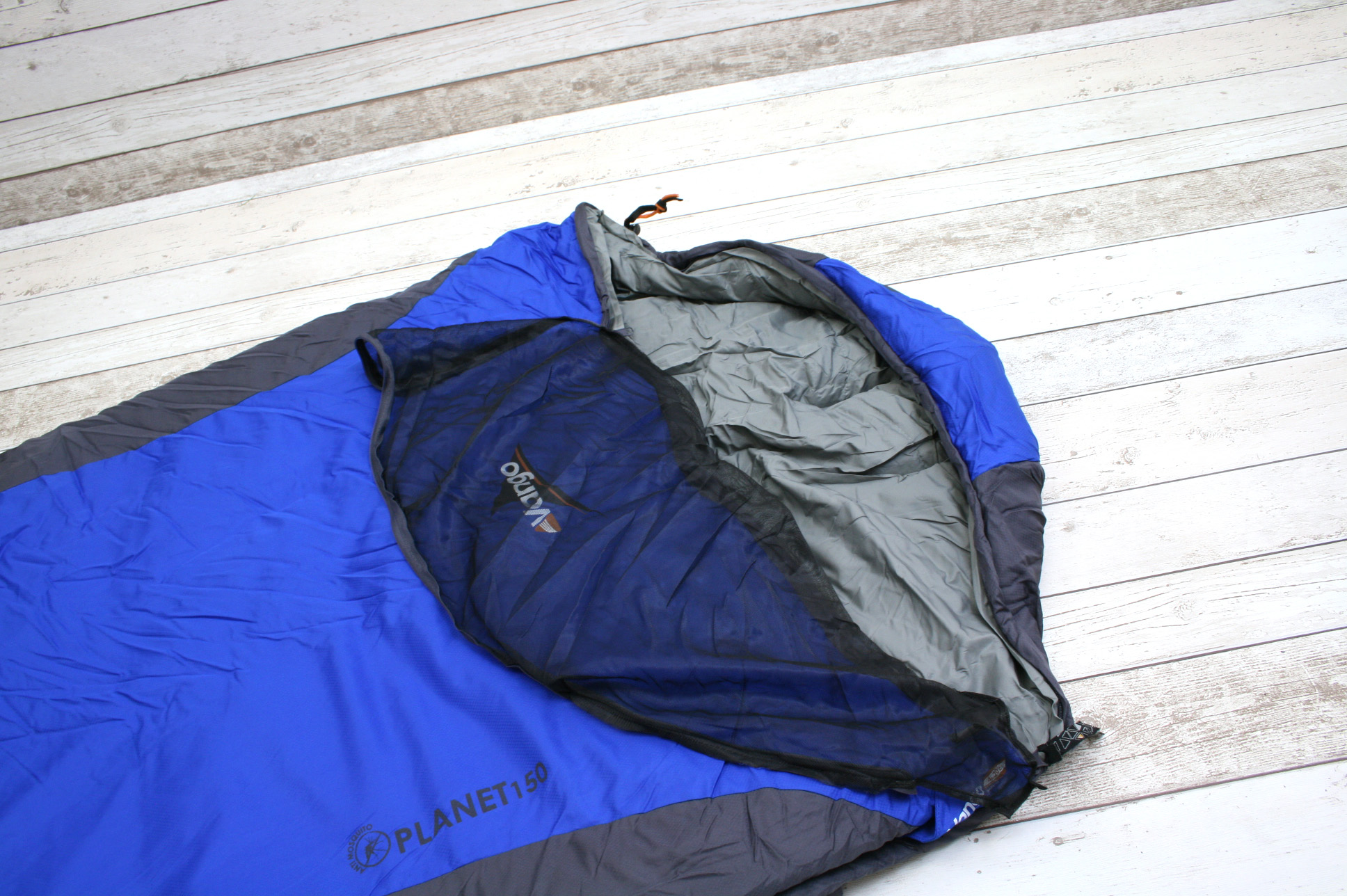 This week I decided to take a closer look at the Vango Planet 150 sleeping bag from their award winning Planet sleeping bag range. The sleeping bag comes with anti-bacterial and mosquito protection and even features a mosquito net in the hood, but is this sleeping bag worthy of it’s award winning status? In this post I will discuss the key features as well as the pros and cons of the Planet 150, hopefully helping you to decide whether or not this is the right sleeping bag to accompany you on your gap year.
This week I decided to take a closer look at the Vango Planet 150 sleeping bag from their award winning Planet sleeping bag range. The sleeping bag comes with anti-bacterial and mosquito protection and even features a mosquito net in the hood, but is this sleeping bag worthy of it’s award winning status? In this post I will discuss the key features as well as the pros and cons of the Planet 150, hopefully helping you to decide whether or not this is the right sleeping bag to accompany you on your gap year.
Sleeping Bag Specifications
Firstly, I thought I would run through the Planet 150’s specifications and technical information, so here goes…
Season Rating: 2-3
Comfort/Limit/Extreme: 6°C/ 1°C/ -14°C
Insulation: Insulite Superfine
Fill weight: Top: 1 x 150 / Base: 1 x 150g/m²
Lining: Polair 300T silky micro-polyester
Shell: Polair 240T diamond ripstop polyester
Max user height: 190cm
Open Size: 210cm x 80/55cm
Pack Size: 25cm x 19cm (compressed)
Weight: 1300g
Tested to EU standard EN13537:2002

To be honest, the manufacturer’s specification doesn’t really do the bag justice, I weighed it on our own scales and got a reading of 1.21kg including the compression sack and managed to compress it to 21cm x 19cm in size.
From looking at the sleeping bag’s specification, this sleeping bag may be slightly too warm for those tropical climates but is certainly an option for destinations such as Europe and South America. The pack size of 25cm x 19cm is fairly compact for a sleeping bag of this season rating and unless you were opting for a down filled sleeping bag you may struggle to find a synthetic 2-3 season bag that is as compact or lightweight. I could imagine that it’s silky micro-polyester lining would be pretty comfortable against your skin.
In terms of the maximum user height, this would be fine for the majority of people but if you’re over 6ft 3″ in height, you might struggle to get a comfortable night’s sleep in this particular sleeping bag. However, this is a problem common to many brands of sleeping bag, not just the Vango range.
Key Features
As well as the standard features you would come to expect from any sleeping bag, the Planet 150 also includes a range of travel related features including HHL vital anti-mosquito and anti-bacterial protection, a mosquito net in the hood and a reversible compression sack that can be used as a pillow.
Although Vango specify that the bag helps to prevent insect bites and tropical disease, I would always recommend using a good mosquito repellent with DEET and a separate mosquito net for Malarial areas. The anti-mosquito impregnation and mosquito net should be treated as additional protection against mosquitoes and other insects, not as a sole defence against them.
As the specification wasn’t clear, I also decided to double check the mosquito net’s hole count with Vango, but unfortunately they were unable to determine an exact hole count. This isn’t a massive issue, but the World Health Organisation recommend at least 156 holes per square inch, so I like to know that my net has at least this amount. I’d recommend using additional mosquito repellent products to ensure you are well protected from mosquitoes and other insects.
Another handy little feature I noticed when I opened out the sleeping bag was the mosquito net storage pocket, this would be really useful when you didn’t want to use the mosquito net and wanted to keep it safe until you needed it. The sleeping bag also has an internal pocket which is generously sized at 24cm x 18cm, with a Velcro fastening to stop it’s contents from spilling out. Internal pockets are normally used by travellers for storing valuable items such as mobile phones, cash and passports and tend to be a common feature on most models of sleeping bags.
The mosquito net can also be zipped up during the day to stop insects climbing inside your sleeping bag. I can’t help but think that the more claustrophobic would probably prefer to pack a compact mosquito net, so they don’t have the net sitting on their face! The mosquito net is an optional feature, however, so you could easily unzip it and keep it inside it’s storage pocket.
Another feature I liked was the reversible fleece lined compression sack, which can be stuffed with clothes or other soft items to form a make-shift pillow. As it packs down to around 25cm x 19cm when compressed, it is smaller in size compared to the Snugpak Travelpak 3. If you needed something with a similar season rating but even smaller and more lightweight, you might want to look at down sleeping bags instead.
Comfort Features
The Planet 150 comes with insulite superfine insulation with a single-layer stitch-through construction, which helps to ensure the sleeping bags insulation is evenly distributed to reduce cold spots. All manufacturers have their own types of insulation and construction but the stitch through construction seems to be unique to Vango.
The sleeping bag also includes an insulated zip baffle, a chunky piece of material that covers the sleeping bag’s zip and is designed to keep drafts out and keep you warm during the night. Models such as the Snugpak Travelpak 3 also feature zip baffles but these are much more basic and lack the insulation of the baffles used on the Planet 150.
The sleeping bag’s lining is Polair 300T silky micro-polyester, which feels nice and soft against your skin and it’s shell is constructed from Polair 240T diamond ripstop polyester material for durability. It’s worth noting that not many sleeping bags on the market have ripstop shells, ripstop material helps prevent snags and rips from spreading should the bag become damaged.
As previously mentioned, the Planet 150 features a mosquito net in the hood. Adjusting the hood to pull it tighter or make it looser while the mosquito net is in use may be a little tricky, as you would have to unzip the sleeping bag to adjust the drawstring. I can see the benefits of using the mosquito net feature but I would most likely opt to pack a separate mosquito net as I’m the claustrophobic type!
The sleeping bag also features a zip that runs down one side of the sleeping bag, as well as the foot. So when you’re visiting warmer countries such as Vietnam or Thailand, this bag could be opened up and used as a blanket for a cooler night’s sleep. It would also be great for countries such as Australia and New Zealand during the summer.
Summary
The RRP of £50.00 is a little steep (but we’ve managed to knock it down to a more reasonable £44.99) considering the 2 season Travelpak 2 from Snugpak has an RRP of £39.95 and the Snugpak 3 season Travelpak3 has an RRP of £49.95. The Snugpak Travelpak range does have similar features including anti-bacterial & anti-mosquito protection and a mosquito net in the hood. However, the overall quality and appearance of the Vango Planet 150 is by far more appealing and also includes the compression sack pillow and internal mosquito net pocket. Another feature the Travelpak range lacks is the ability to be opened up fully and used as a blanket.
It can be difficult to find a good 3 season synthetic sleeping bag with a compact and lightweight design. I feel that with the Planet 50 having a 1-2 season rating and the Planet 100 having a 2 season rating, Vango could possibly consider upgrading the 150 to a 3 season bag, rather than it’s current 2-3 season rating.
View full details and specs for the Vango Planet 150 >>






